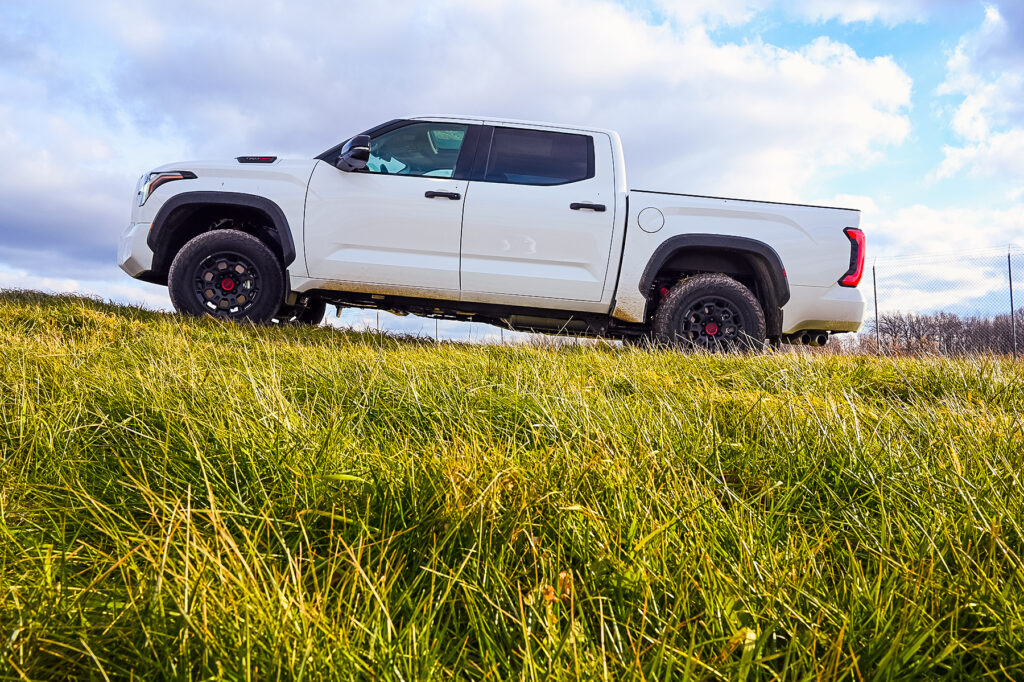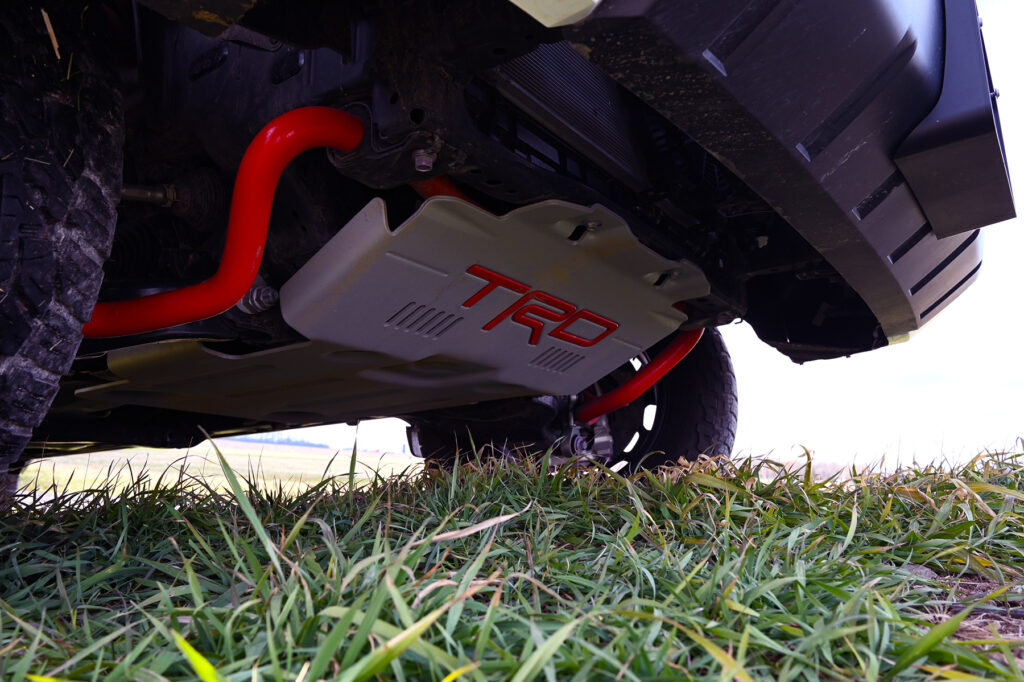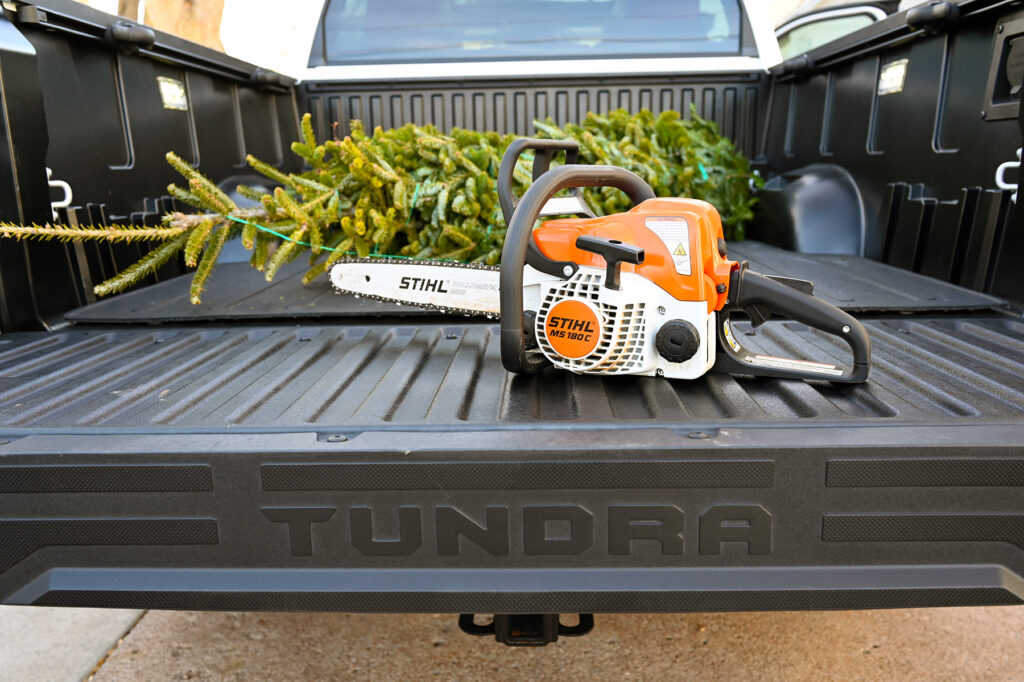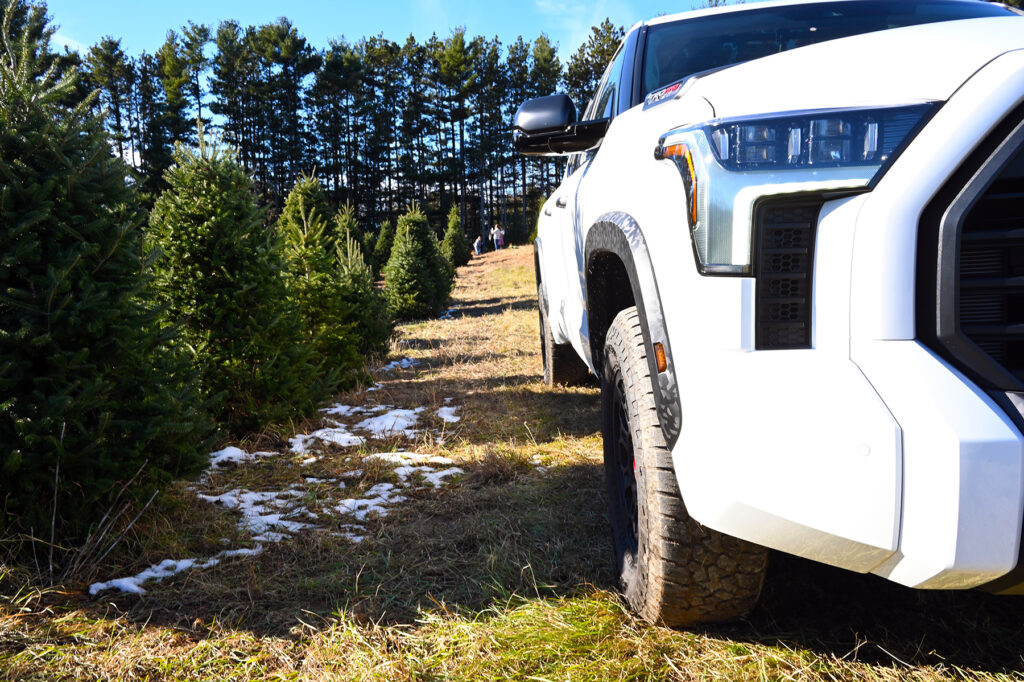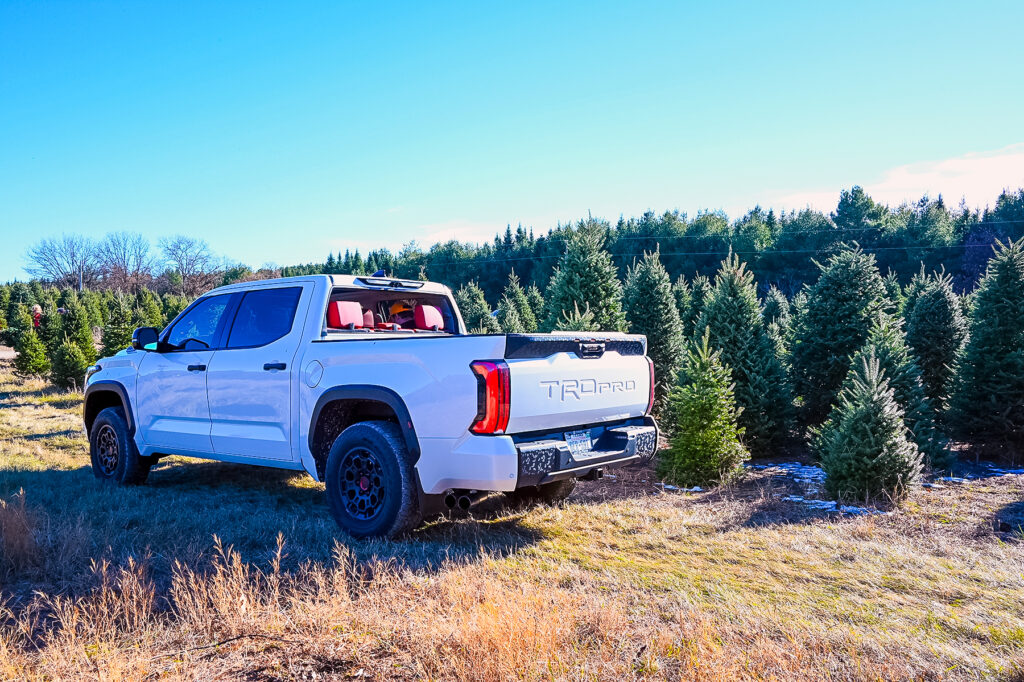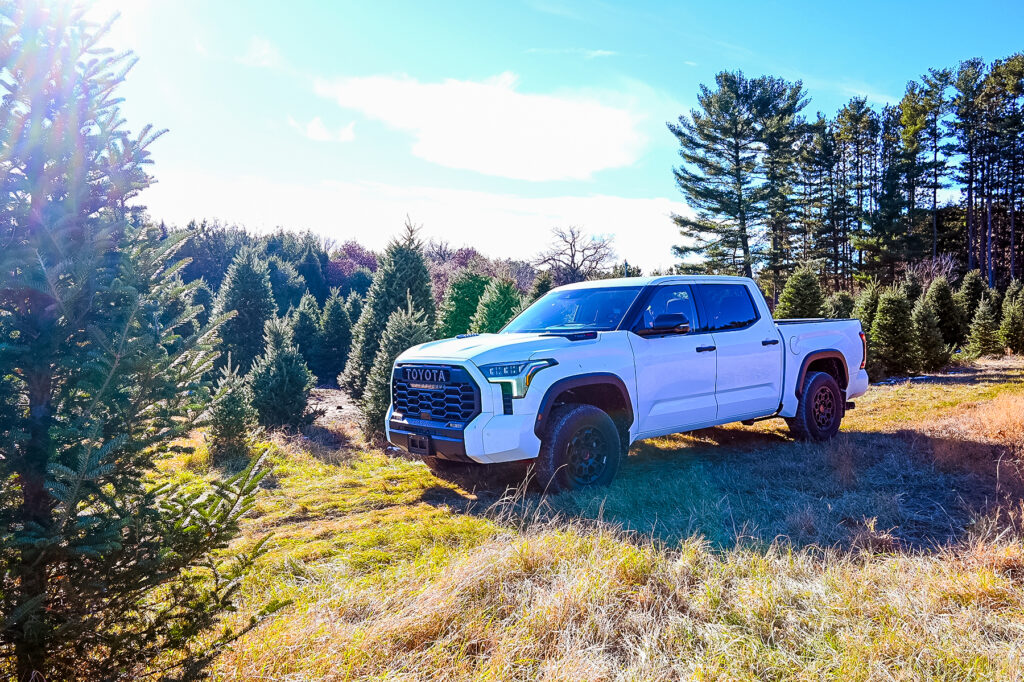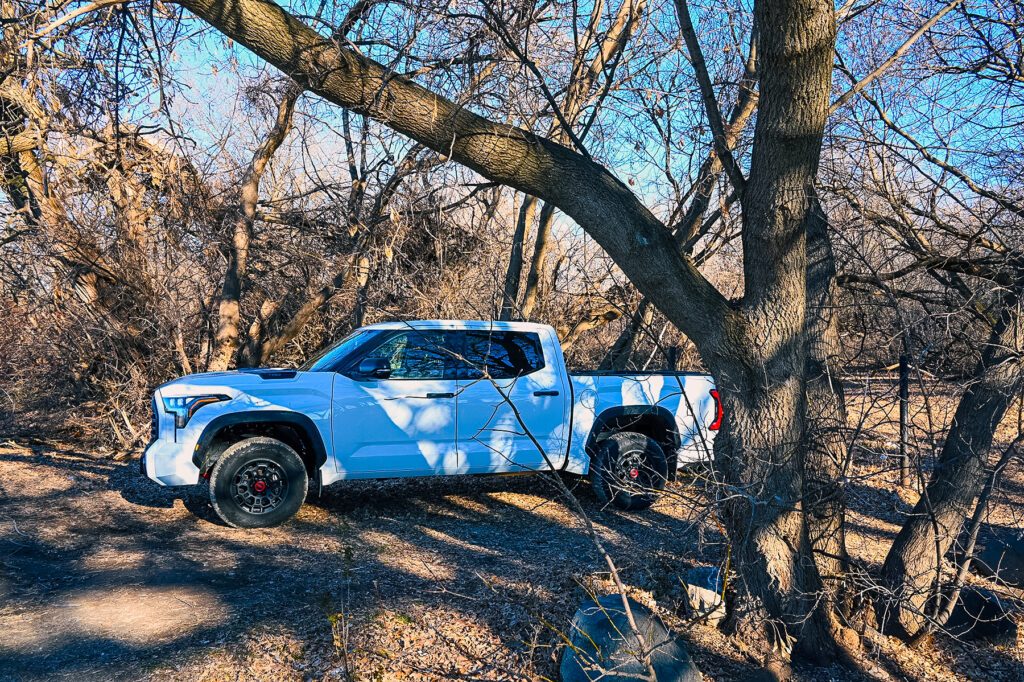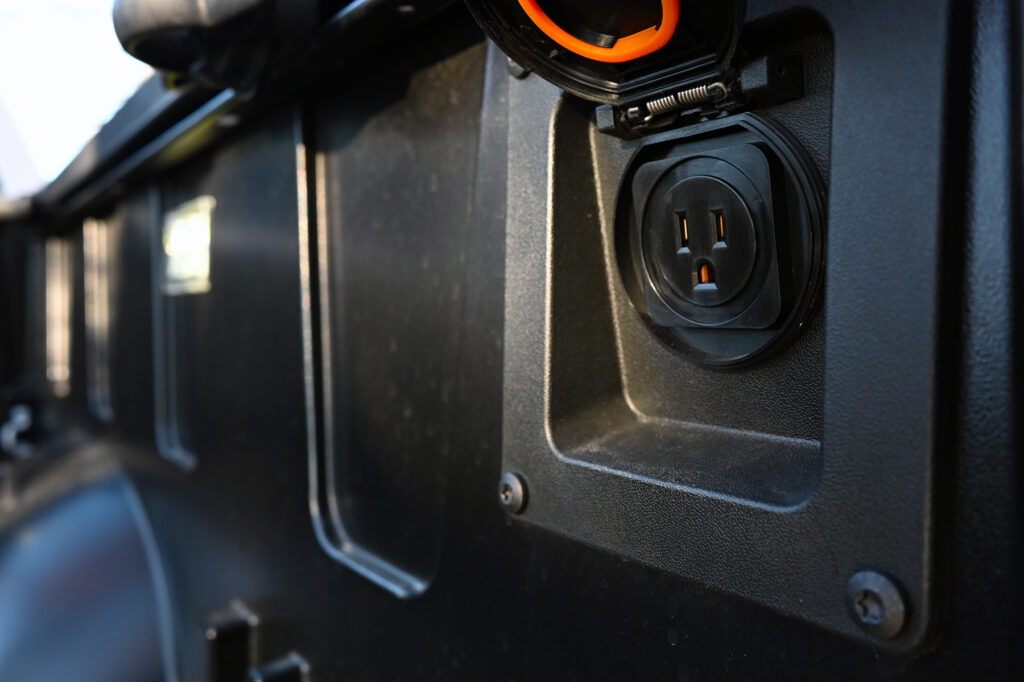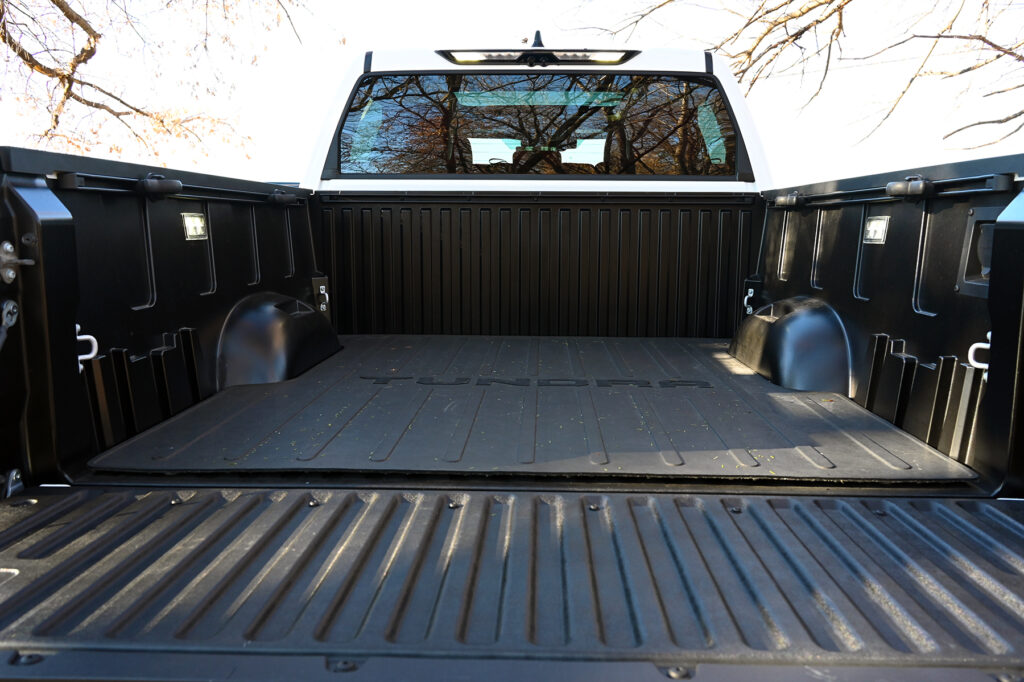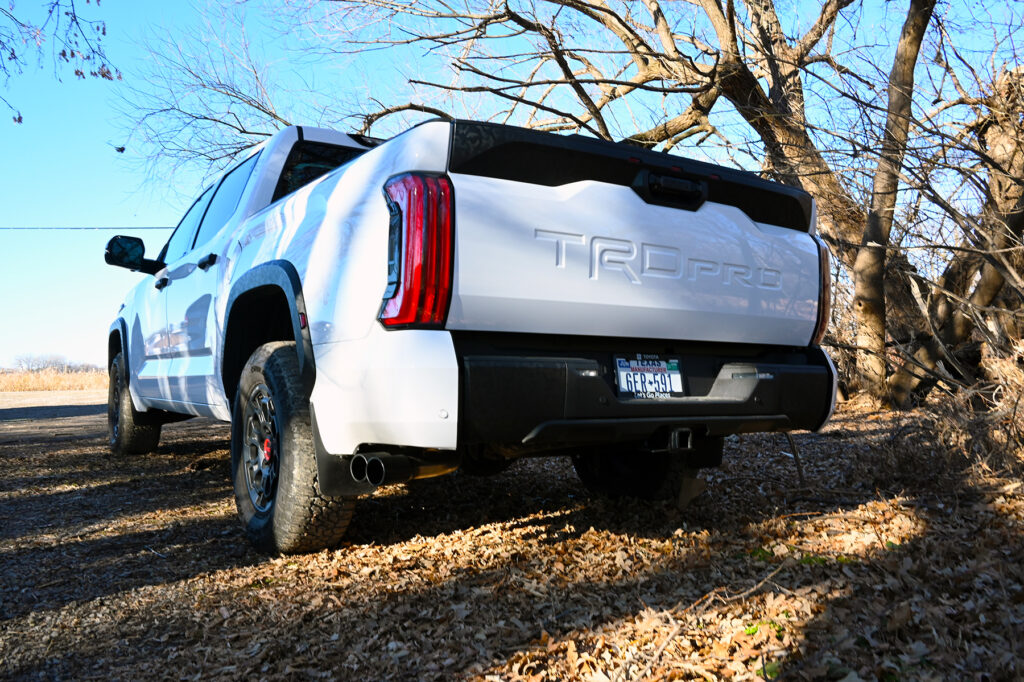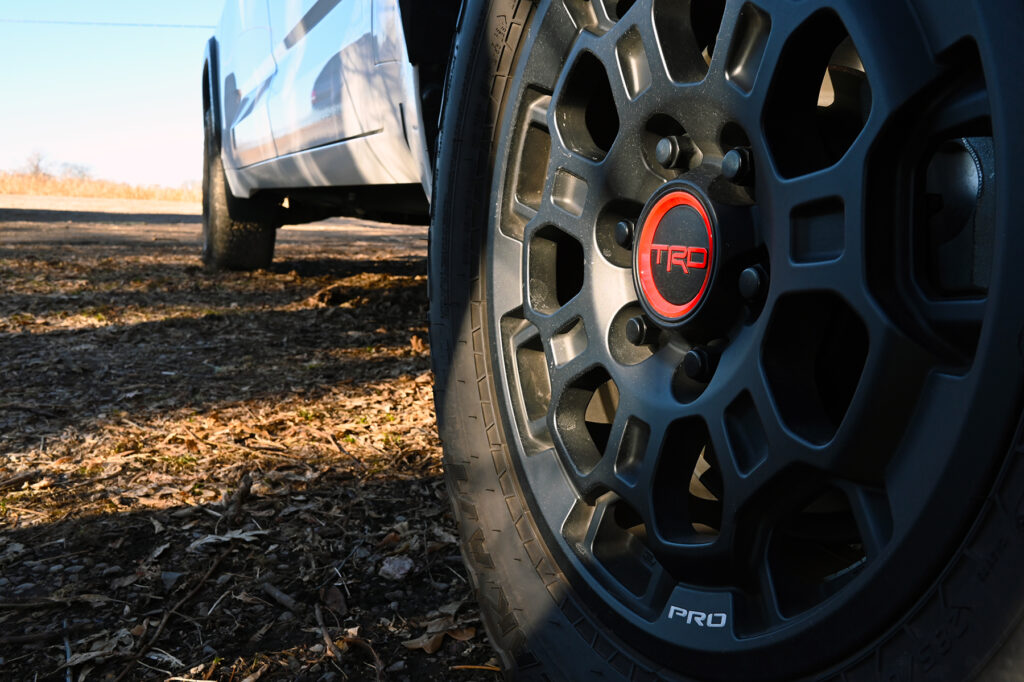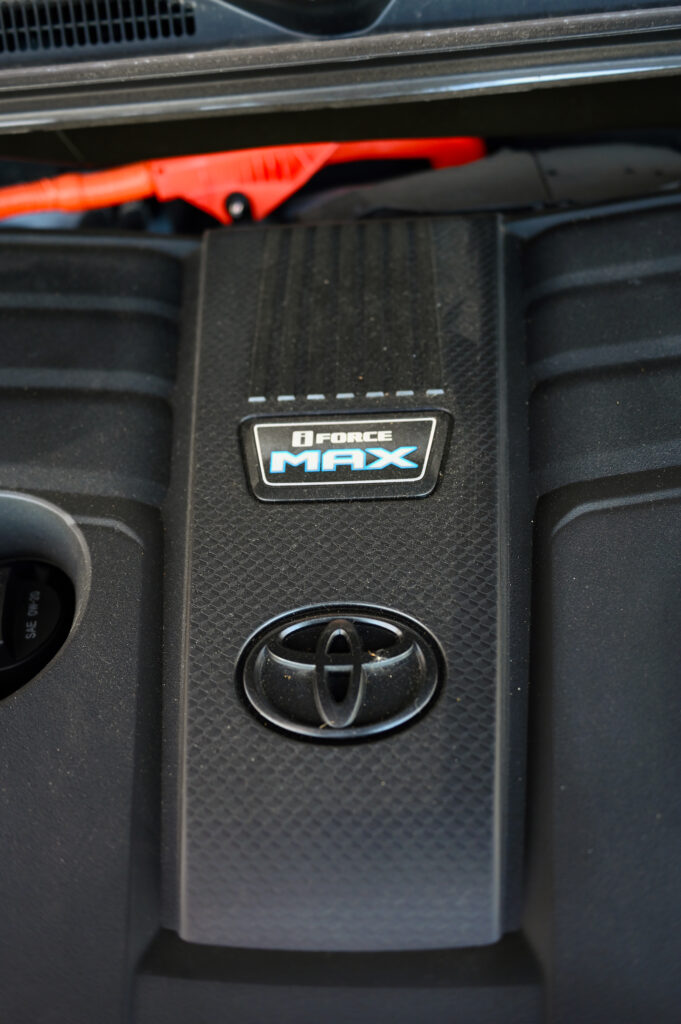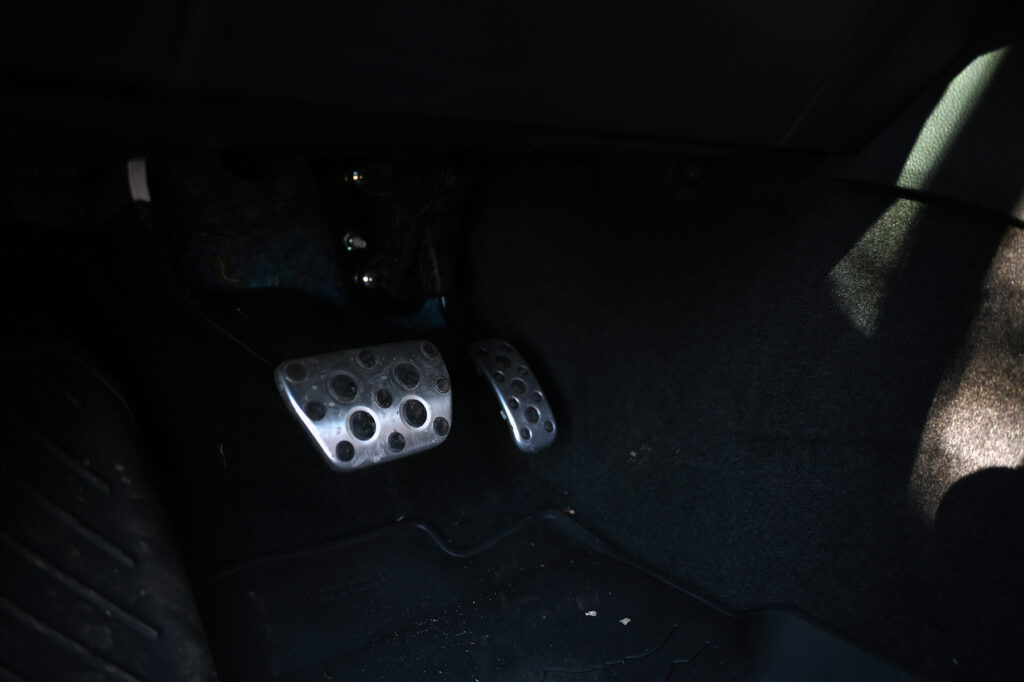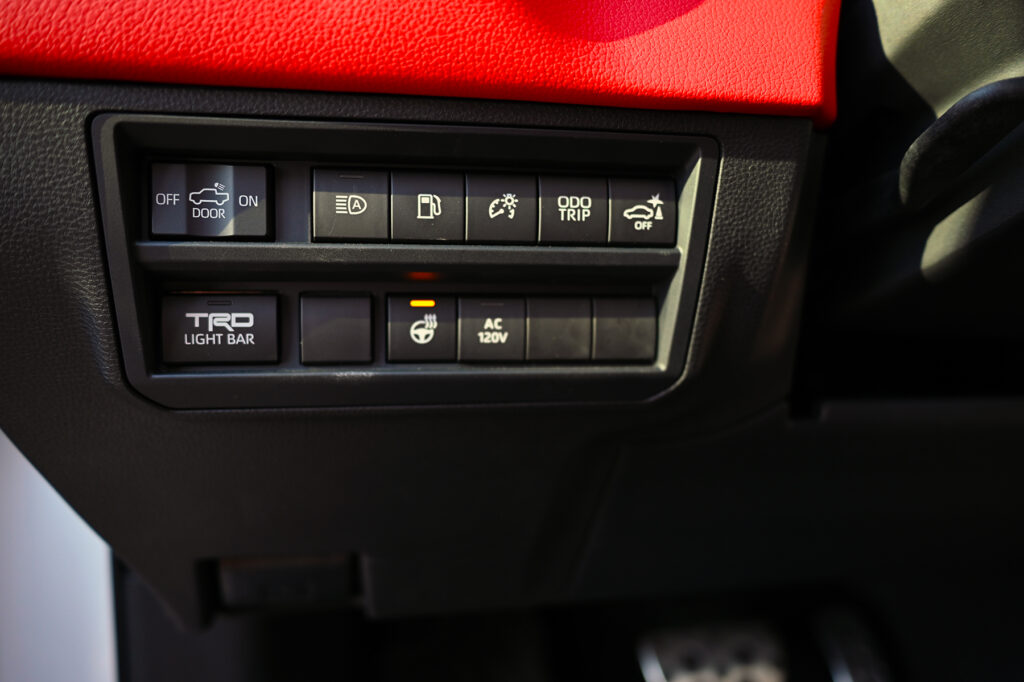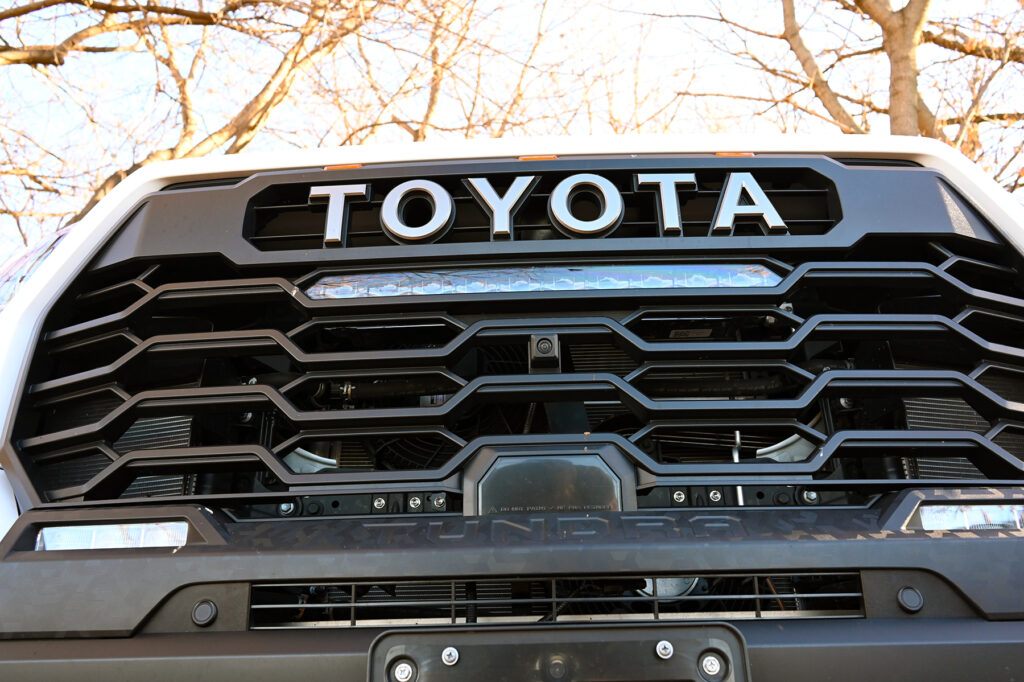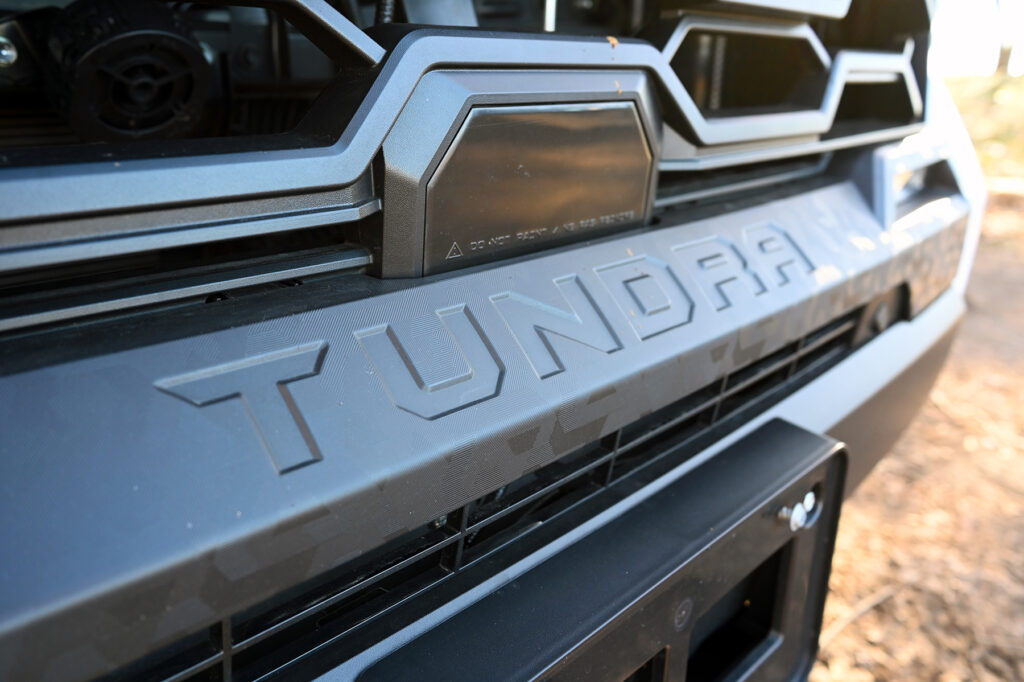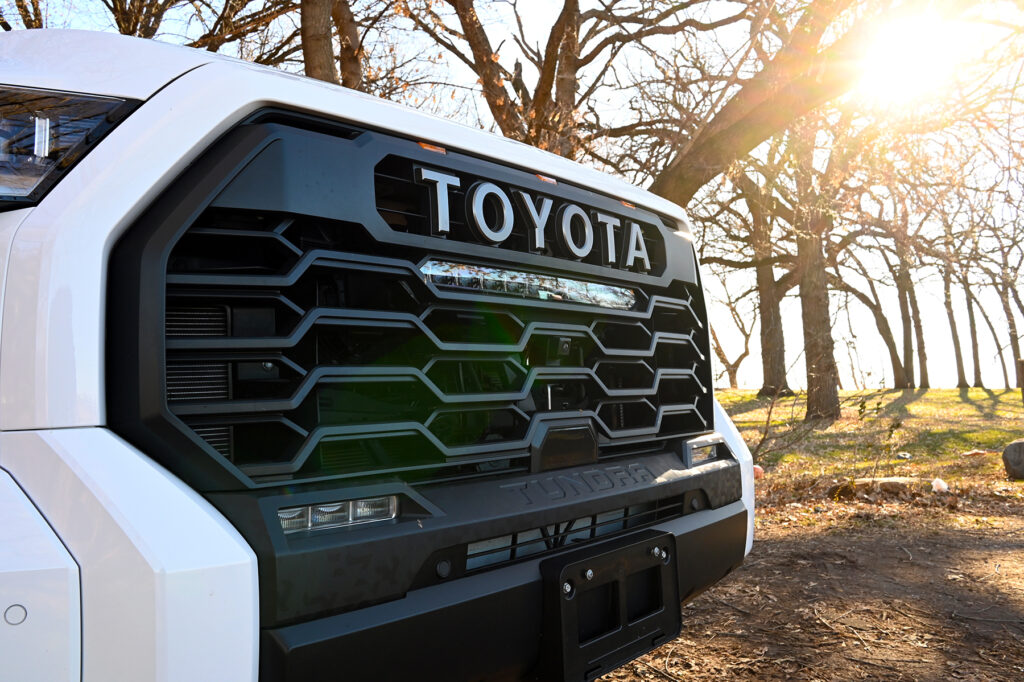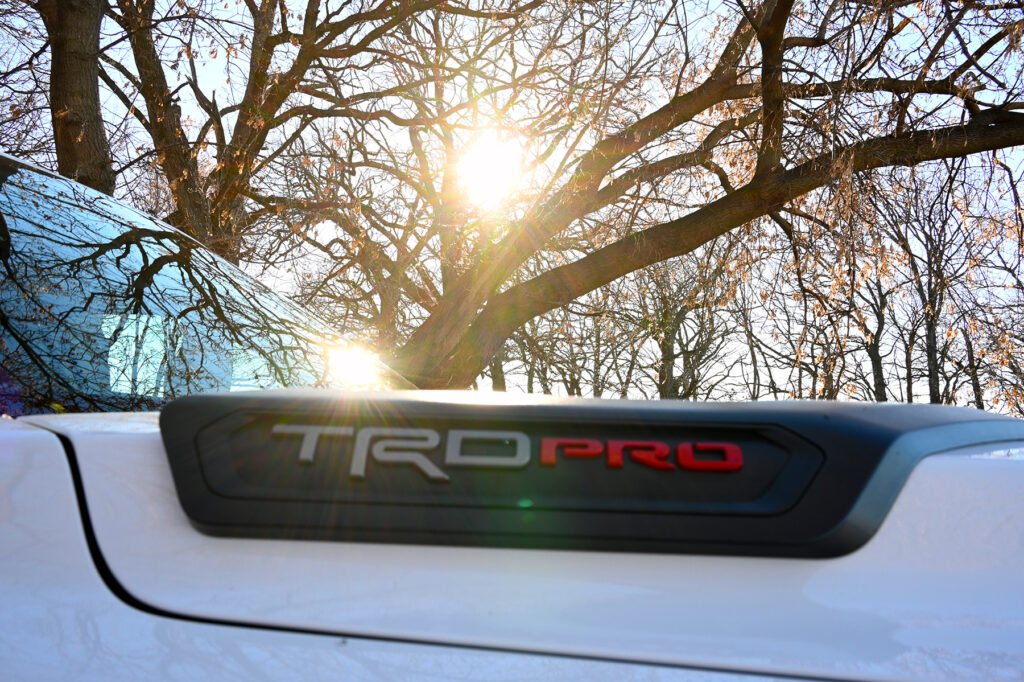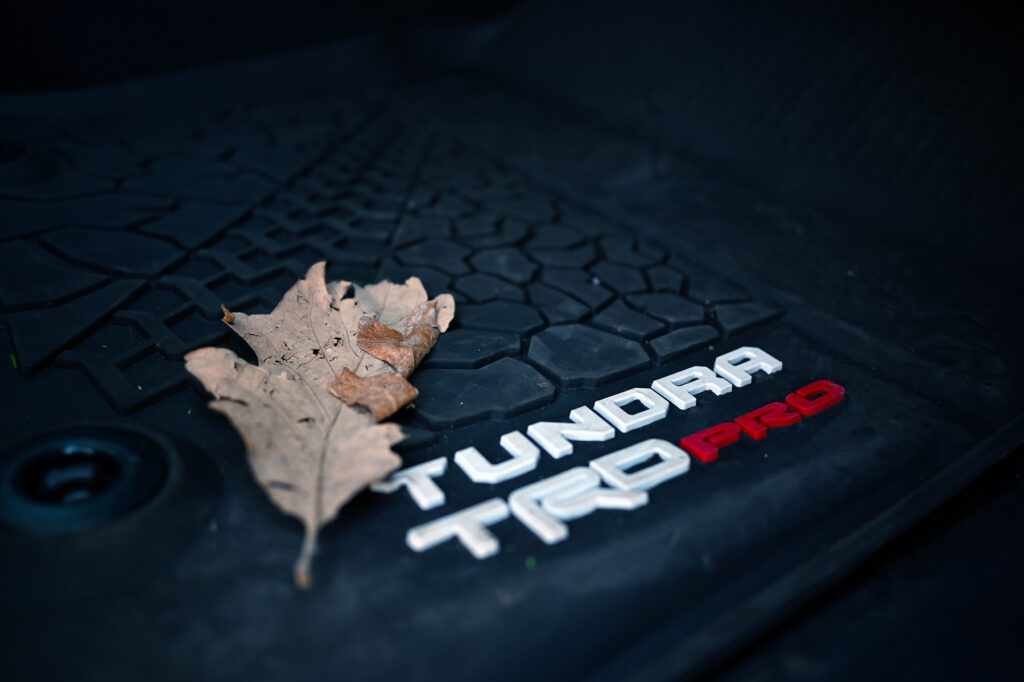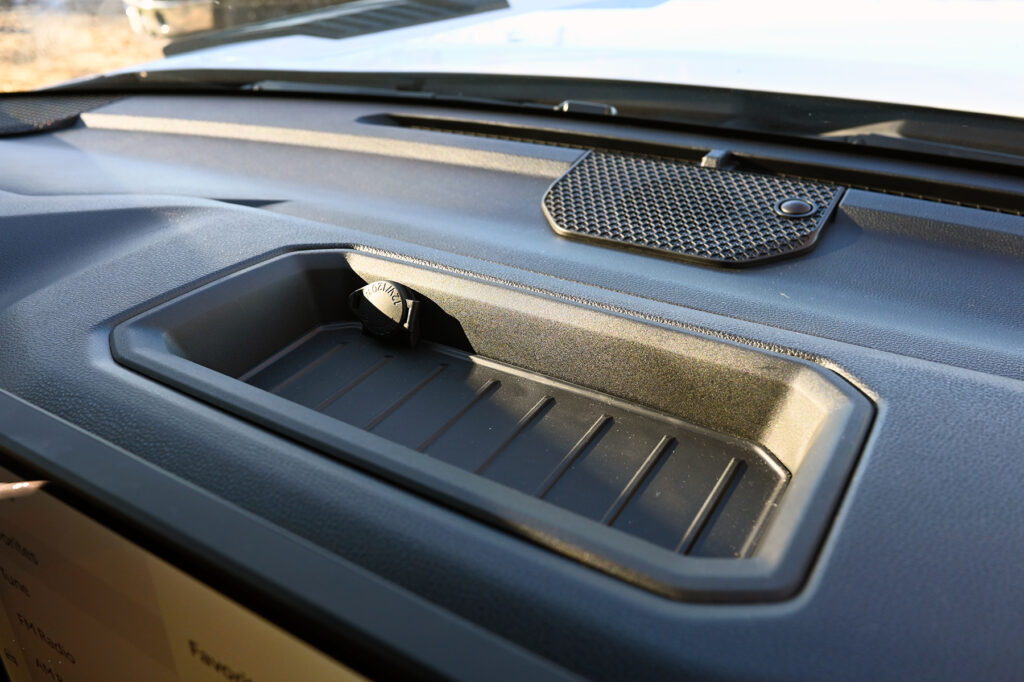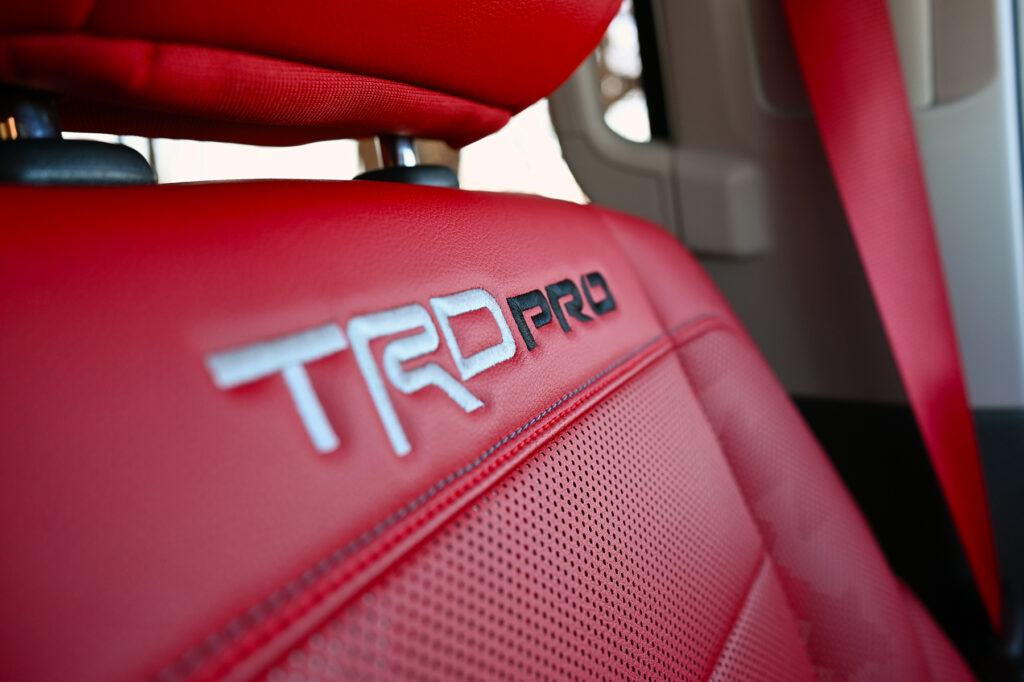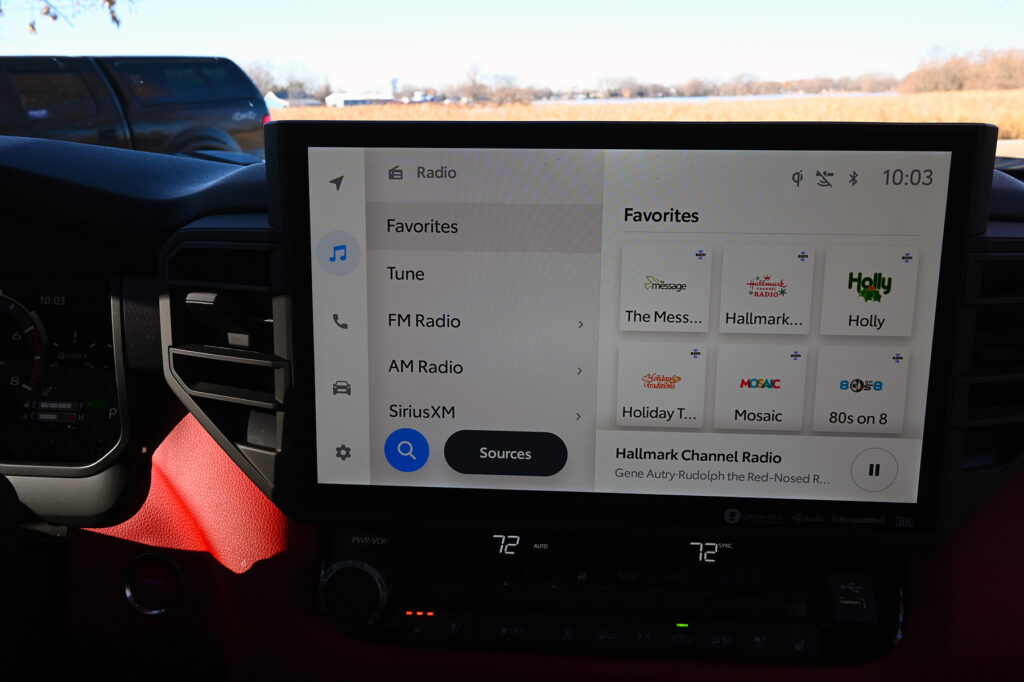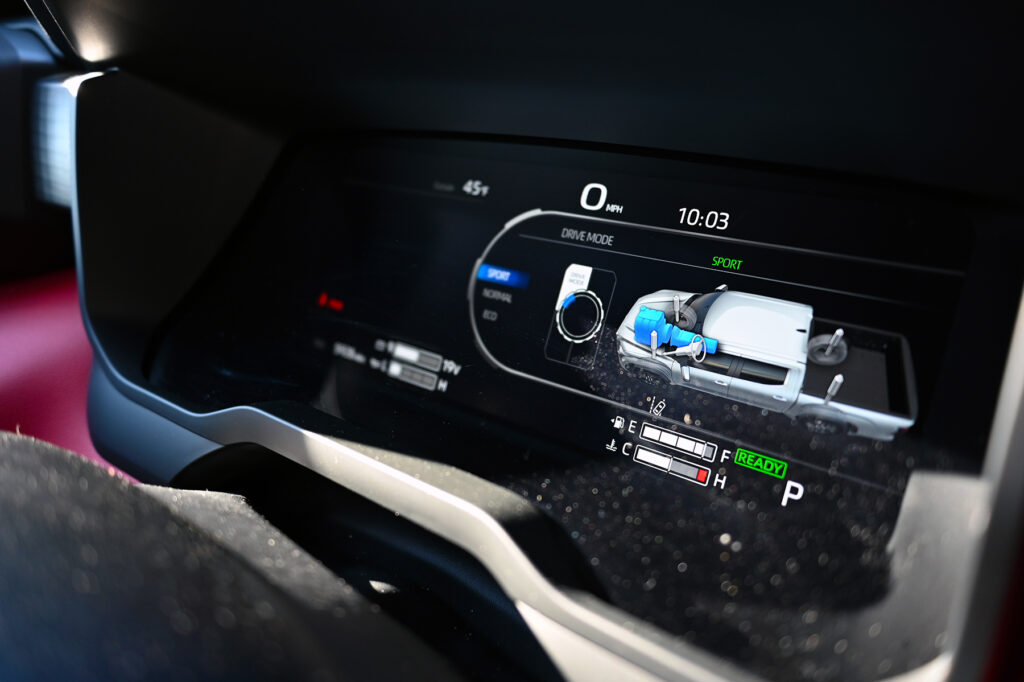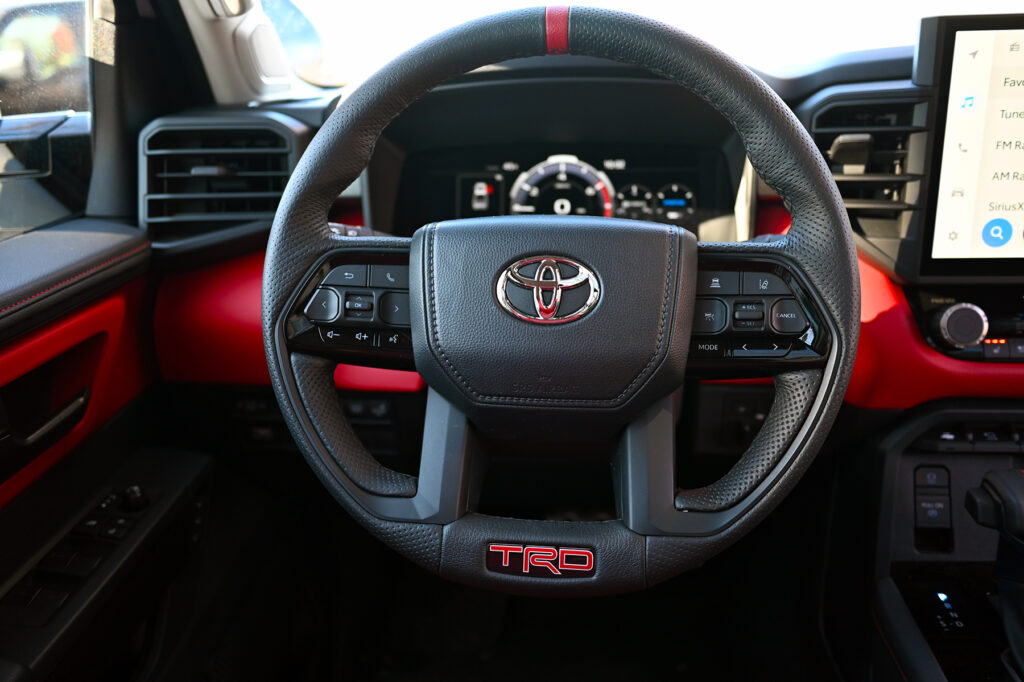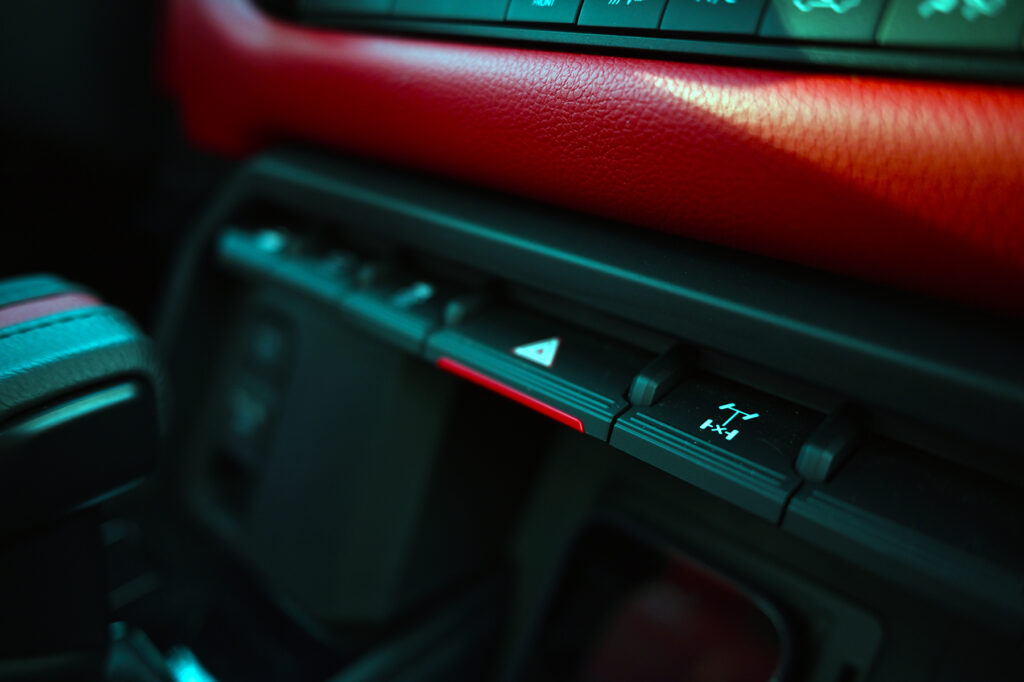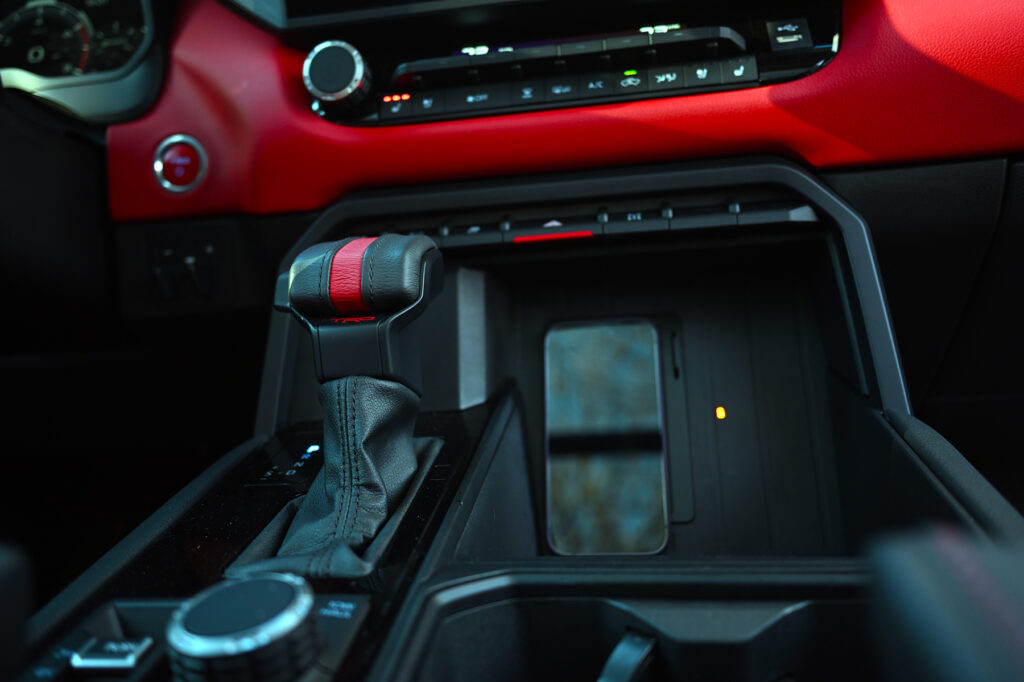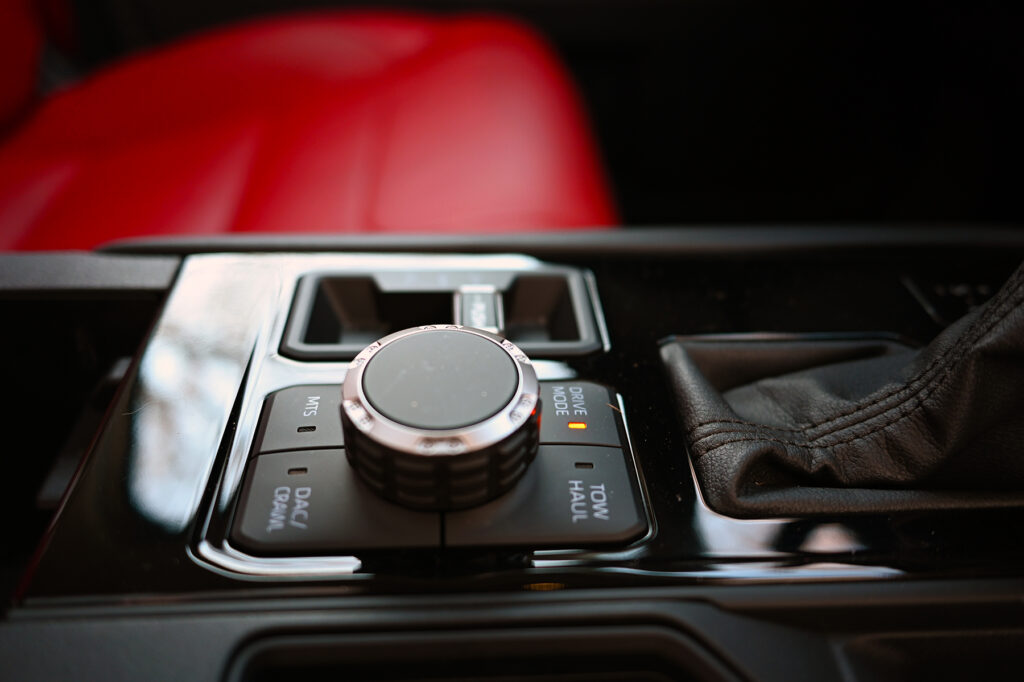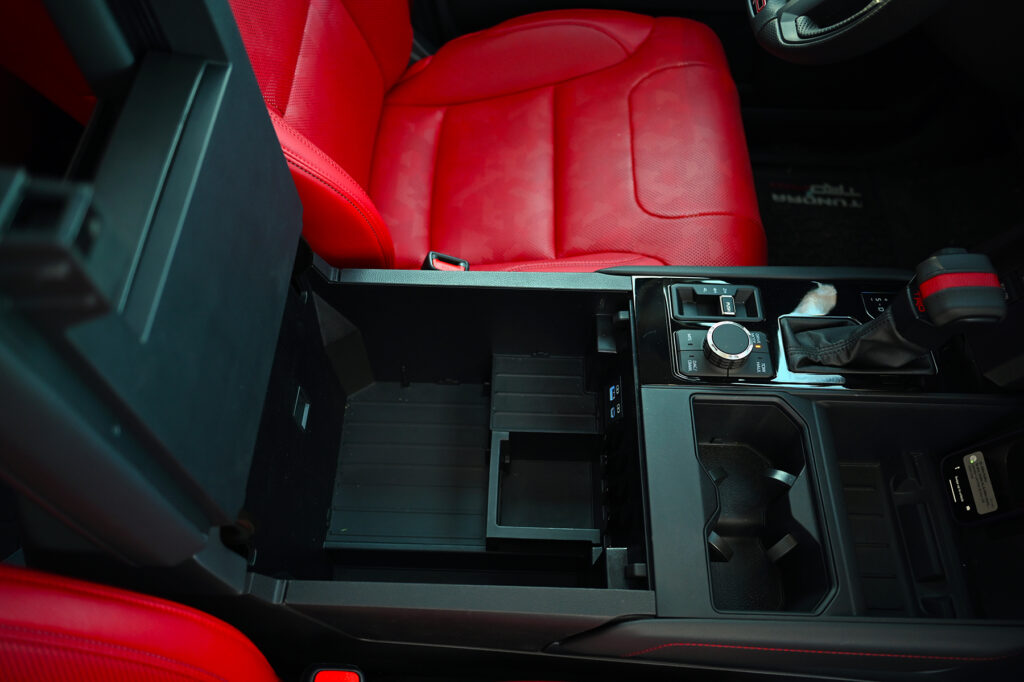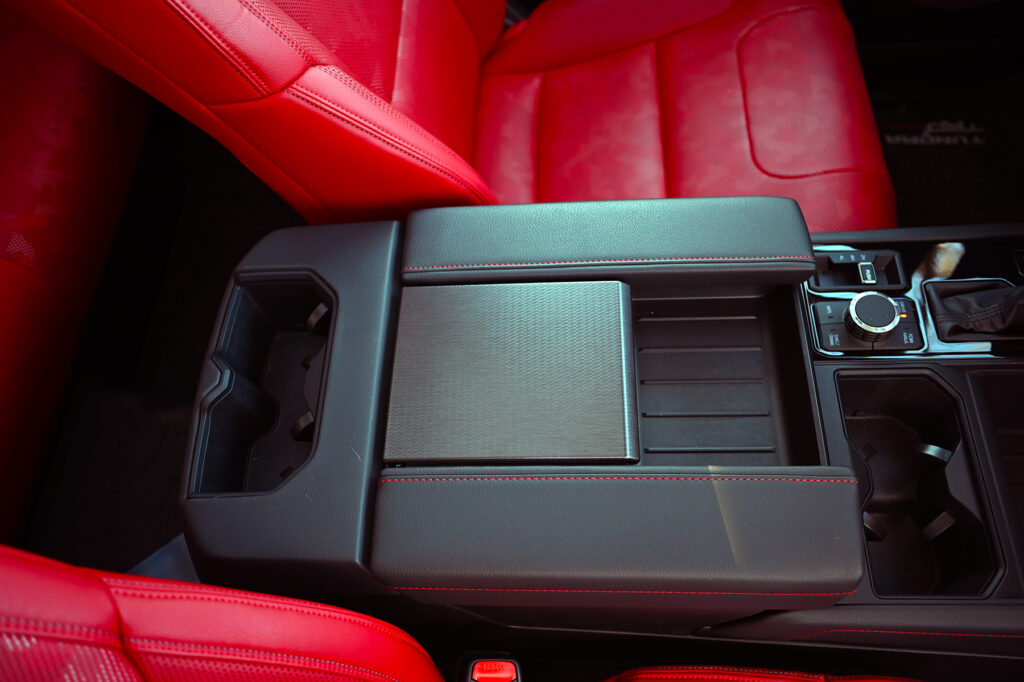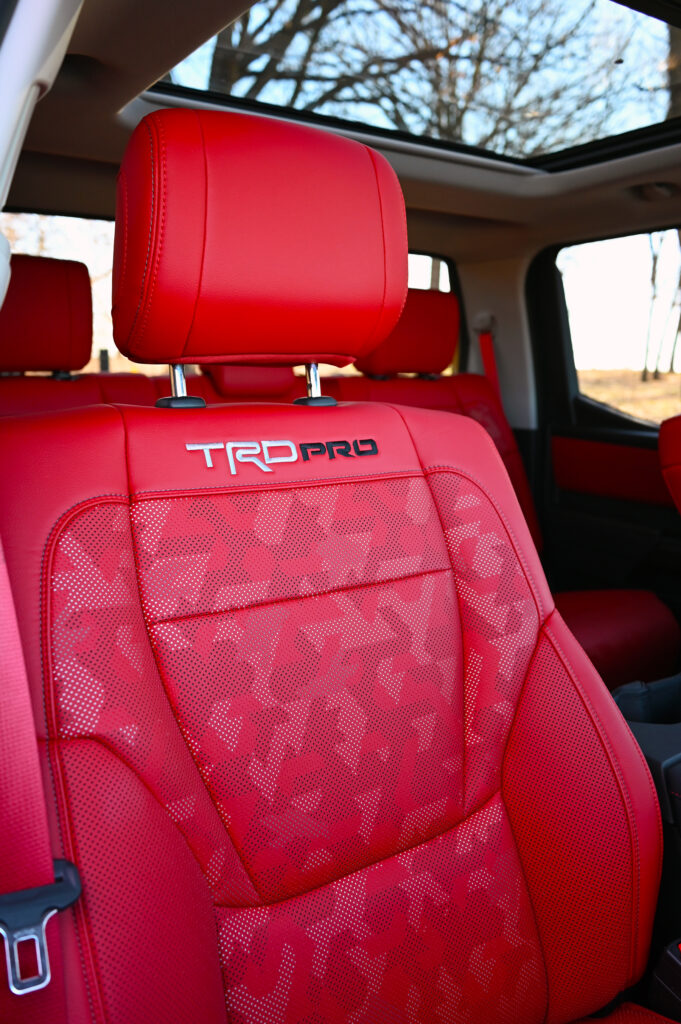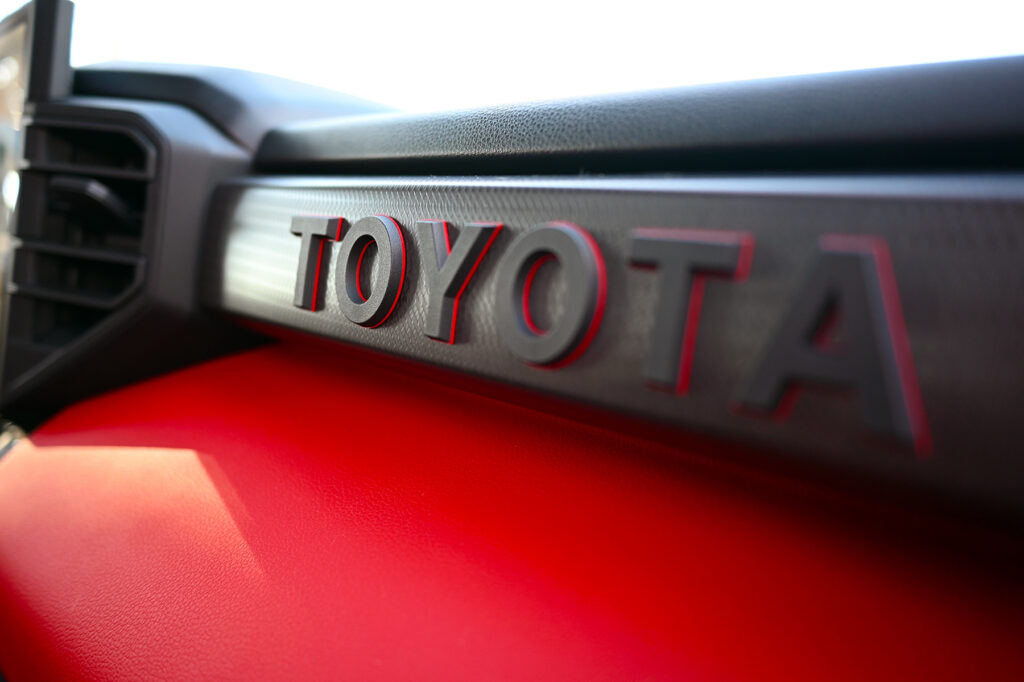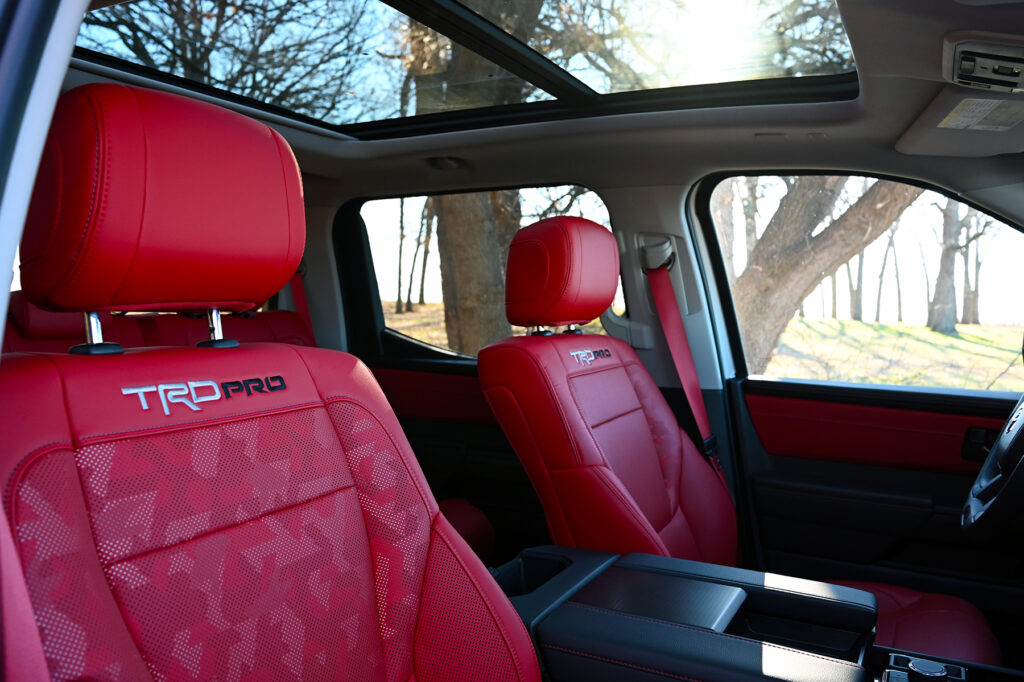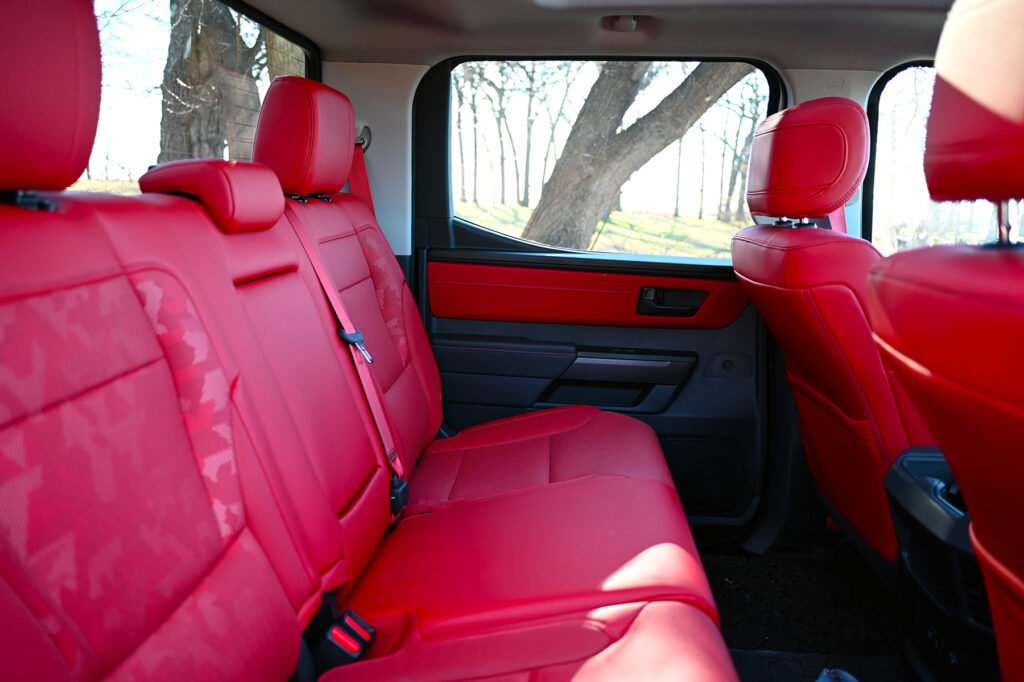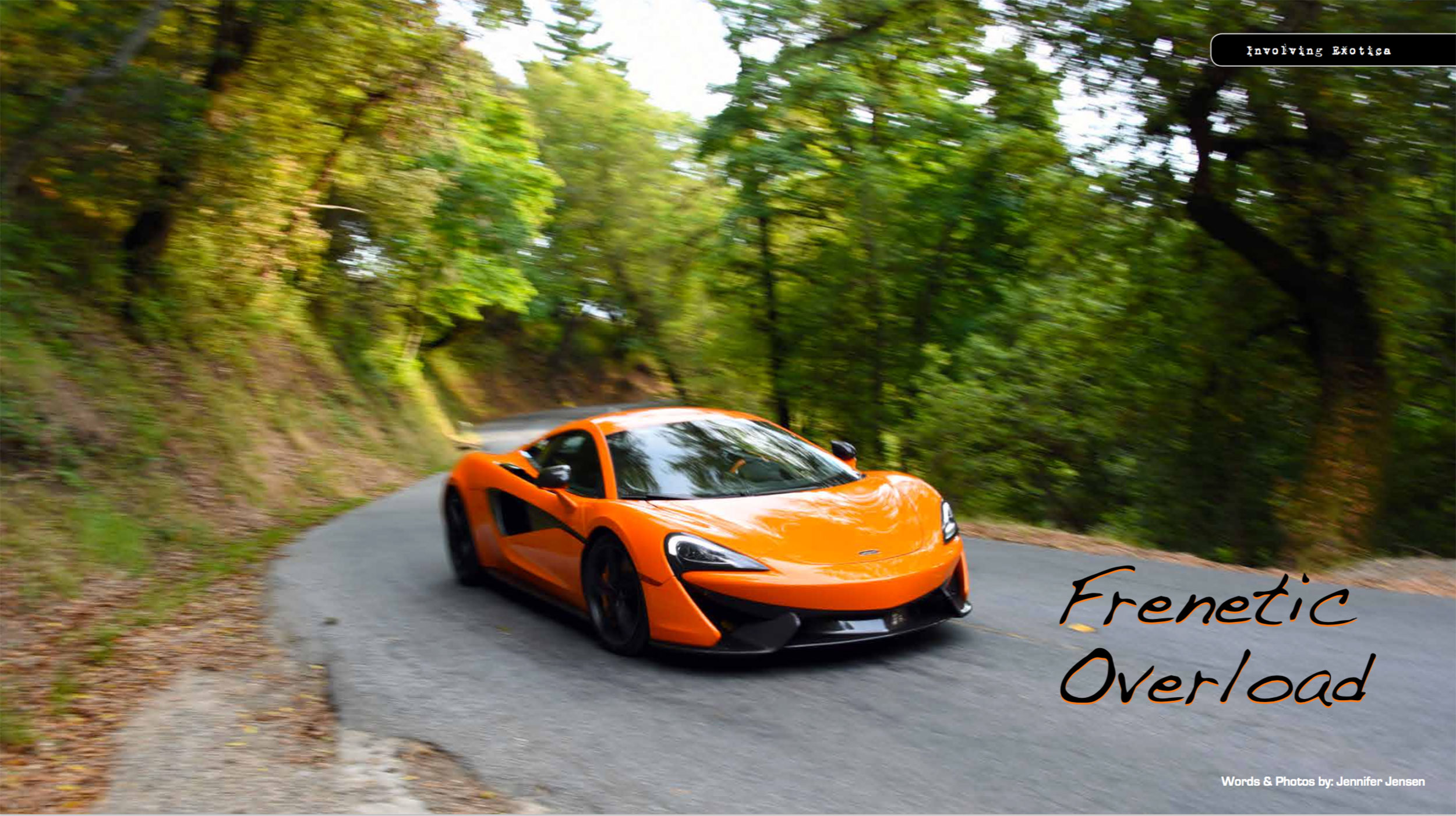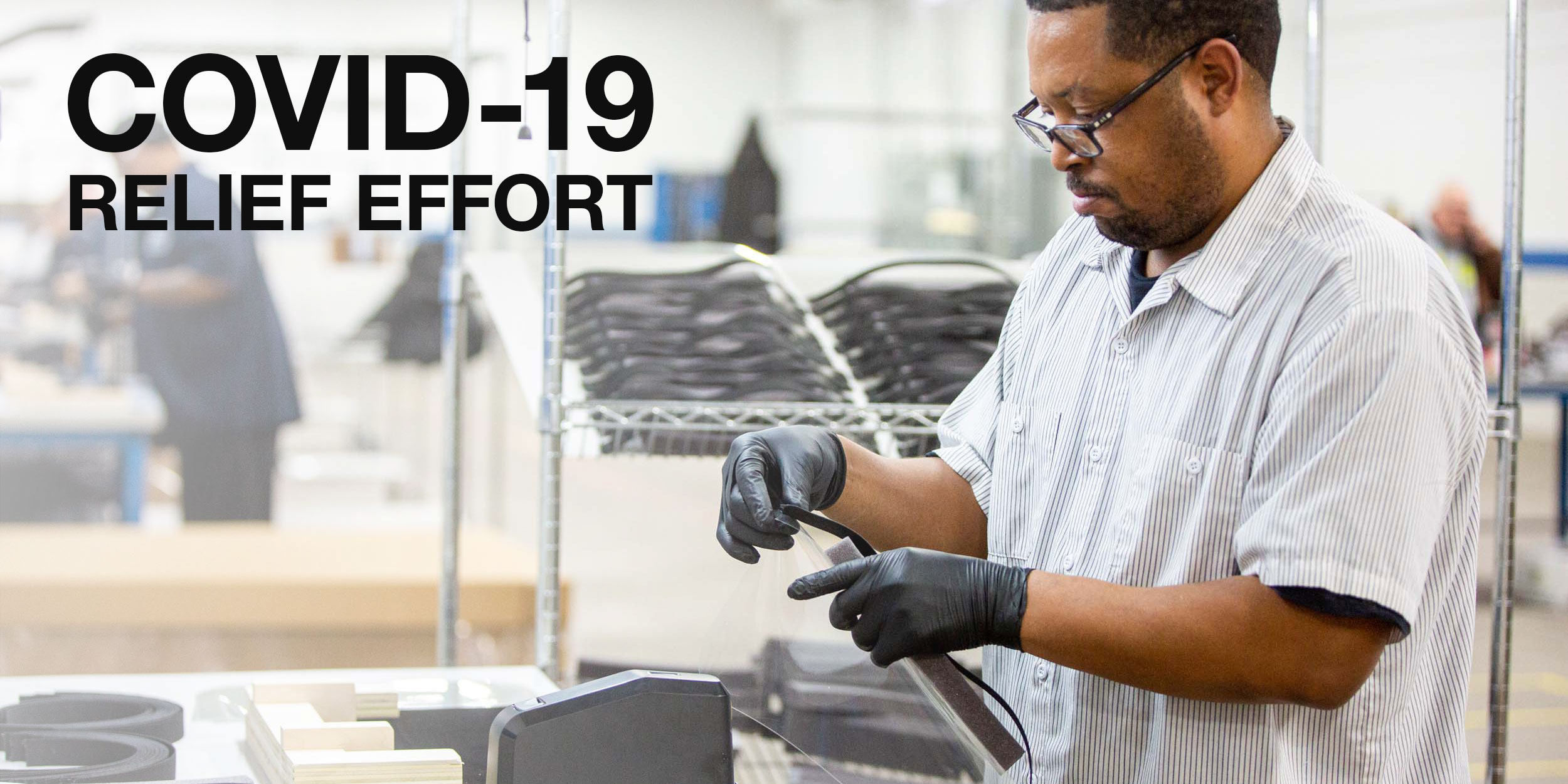Toyota Tundra TRD Pro: Taking Toyota’s Big Truck Off the Beaten Path
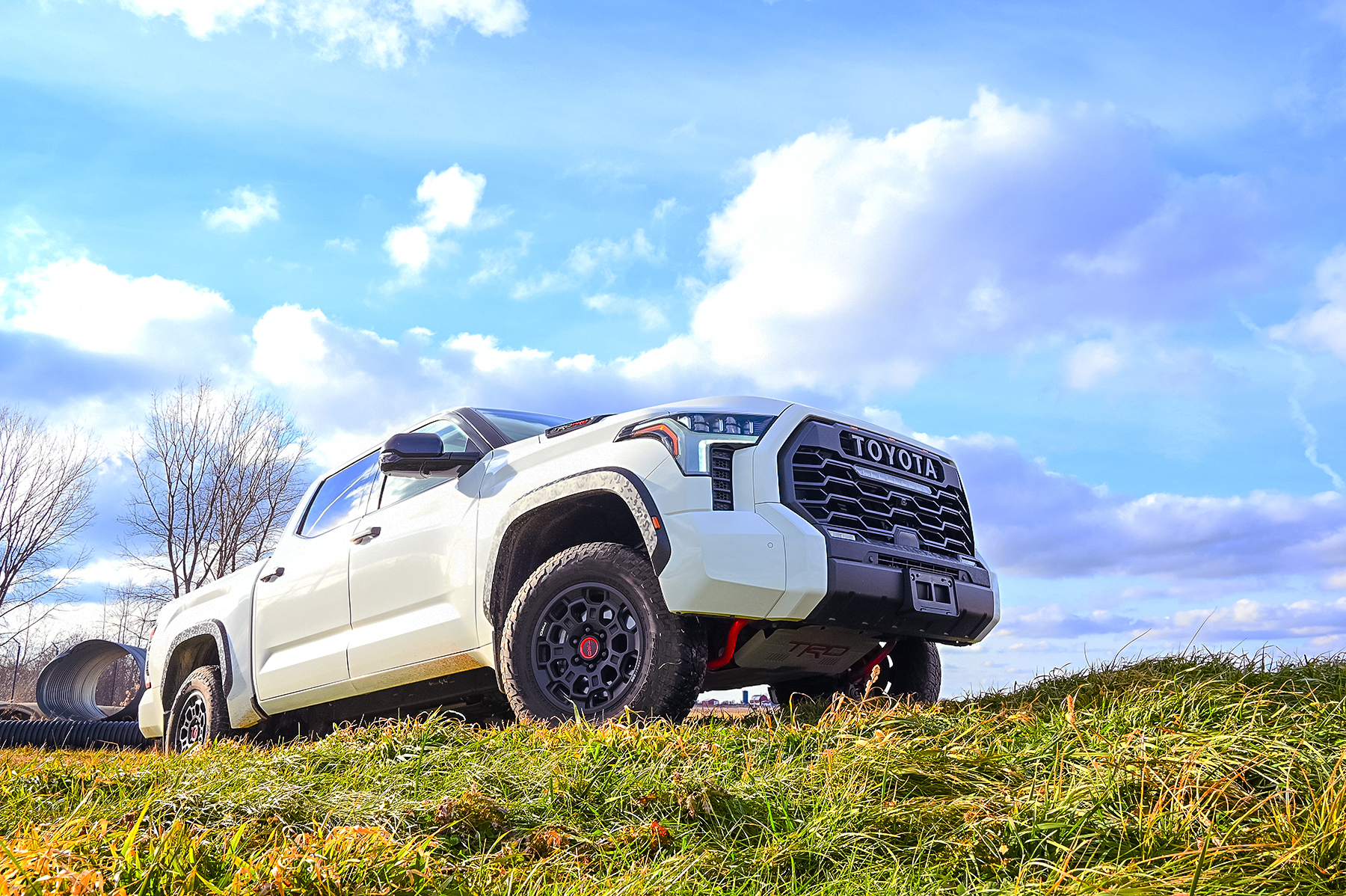
Words and Photos by Jennifer Jensen
Welcome to a different kind of Tundra, the TRD Pro, Toyota’s “go anywhere” trim of their well-loved full-size truck. The Tundra was freshly redesigned for the 2022 model year, and for all intents and purposes it feels like a well-executed update for those familiar with the Tundra lineage. Toyota offers a Tundra for just about everyone with the SR, SR5, Limited, Platinum, 1794, Capstone and the TRD Pro along with double cabs or crew cabs, 2 or 4-wheel drive, and beds of 5.5, 6.5, or 8.1 feet. All of these models have their own offerings of options but we had the opportunity to spend some time with the TRD Pro. With a sturdy stance, off-road DNA, and plenty of tech, the TRD Pro blends Toyota’s signature reliability with an outdoorsy edge. So let’s dive into the details on what you can expect from the updated Tundra platform.
Exterior Updates and the New TNGA-F Platform
The updated Tundra was the first to ride on Toyota’s new TNGA-F platform—a fully boxed frame, now 20% stiffer and 10% lighter than the last-gen Tundra’s. Toyota didn’t stop there. They’ve added an impressive TRD Off-Road suspension with a 1.1-inch front lift, 2.5-inch Fox internal bypass coilovers, and rear remote reservoir shocks. There’s a front skid plate and an increase in the angle of approach from 2 to 26.2 inches, departure angles are up by 0.2 inches from 24 to 24.2 inches. This should give you more than enough ground clearance and control when you decide it’s time to leave the asphalt behind.
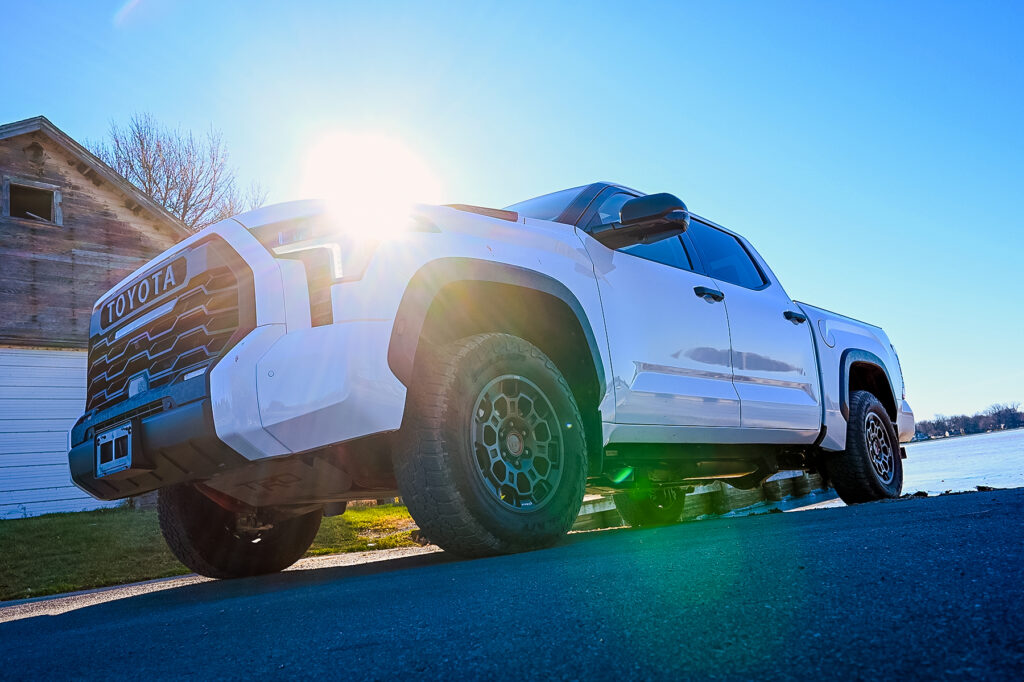
Aesthetic changes include flared fenders with a distinct camouflage-style pattern, which Toyota sprinkled onto the front and rear bumpers as well. These small details separate it from the more modest trims, adding the rugged look this trim promises to deliver. And it isn’t all just about appearance—the TRD Pro has 33-inch tires and 18-inch BBS forged wheels. These additions boost its capability, giving you more grip, traction, and confidence off-road.
The updated Tundra TRD Pro certainly looks the part of an off-road bruiser.
Cabin Comfort Meets Utility
Inside, Toyota kept things both spacious and functional. Big trucks come with big cabins, and Toyota didn’t skimp on space. It’s easy to get comfortable with its large heated and ventilated SofTex-trimmed seats. There’s TRD badging on the steering wheel, the shifter, and the seats. There’s also a huge “TOYOTA” badge in front of the passenger just in case you forget which pickup truck you bought.
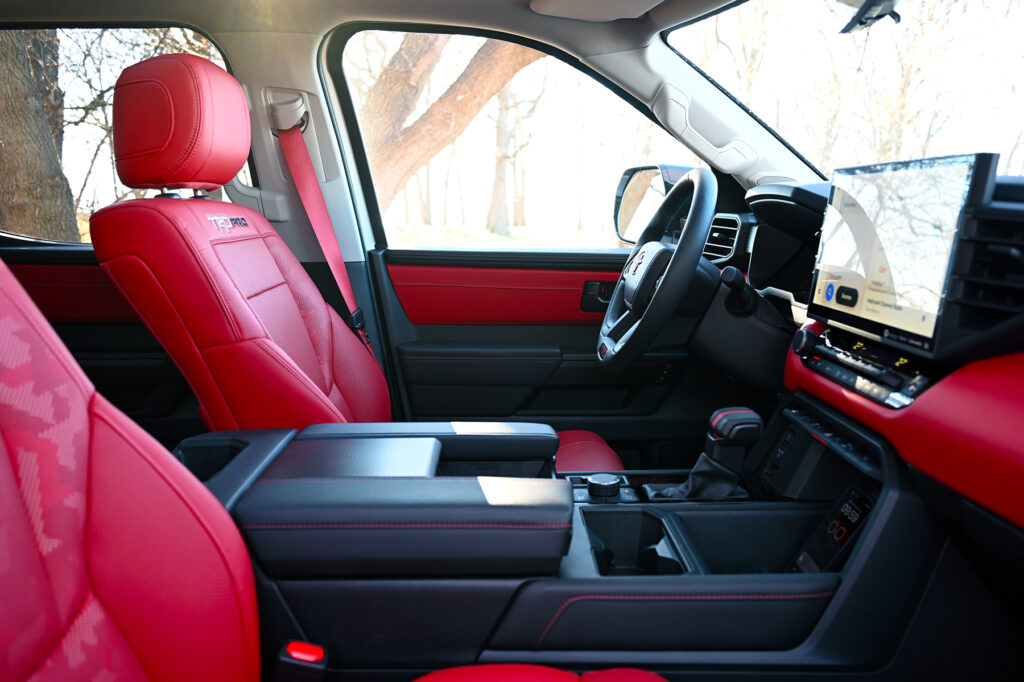
Tech-wise, the centerpiece is the massive 14-inch touchscreen. An 8-inch screen is standard on lower trim levels, but I really like this big one. It’s responsive and intuitive. Apple CarPlay and Android Auto come standard. In the TRD Pro there is also a 12.3-inch digital cluster in front of the driver. Lower trims have analogue gauges.
One of my favorite features on the Tundra is the fact that Toyota kept big knobs and buttons. The volume knob is huge. If I had mittens on top of gloves, I could still use the volume knob. There are hard buttons for the HVAC controls along with big switches. I’m telling you, this is awesome.
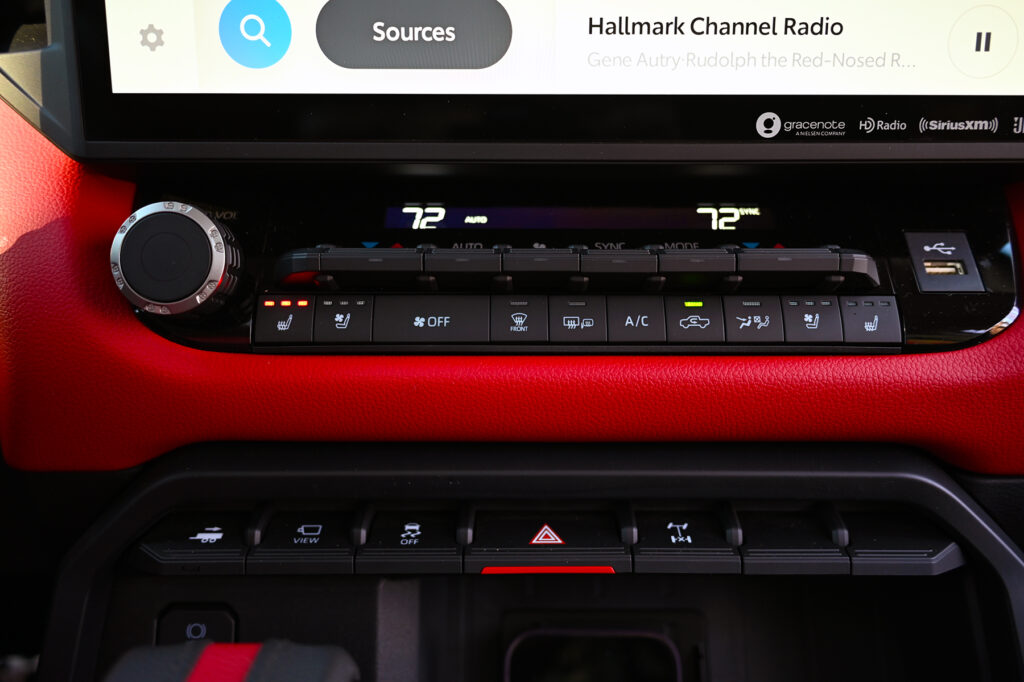
For storage, Toyota equipped the rear seats with flip-up functionality. One of the downsides to the hybrid variant is that the batteries cut down on some of the under-seat storage. Combine that with the panoramic roof and rear seat headroom suffers. But, for the most part, there is plenty of room in the Tundra’s cabin.
Under the Hood: Power and Performance
Gone are the days of the V8 Tundra, and in its place is the choice of either Toyota’s i-Force or the i-Force Max. The i-Force engine is a 3.5-liter twin-turbo V6 pushing out 389 horsepower and 479 lb-ft of torque. Unless you get an SR in which case the engine is a little less powerful at 348 hp and 405 lb-ft. On the other hand, Toyota’s i-Force Max is a 3.5L twin-turbo V6 hybrid powertrain. That powertrain is what is in our TRD Pro so we are dealing with a stout 437 horsepower and 583 lb-ft of torque. That’s a lot of torque, which can help with towing. Speaking of which, the towing capacity is a hefty 11,175 pounds, while payload tops out at 1,600 pounds.
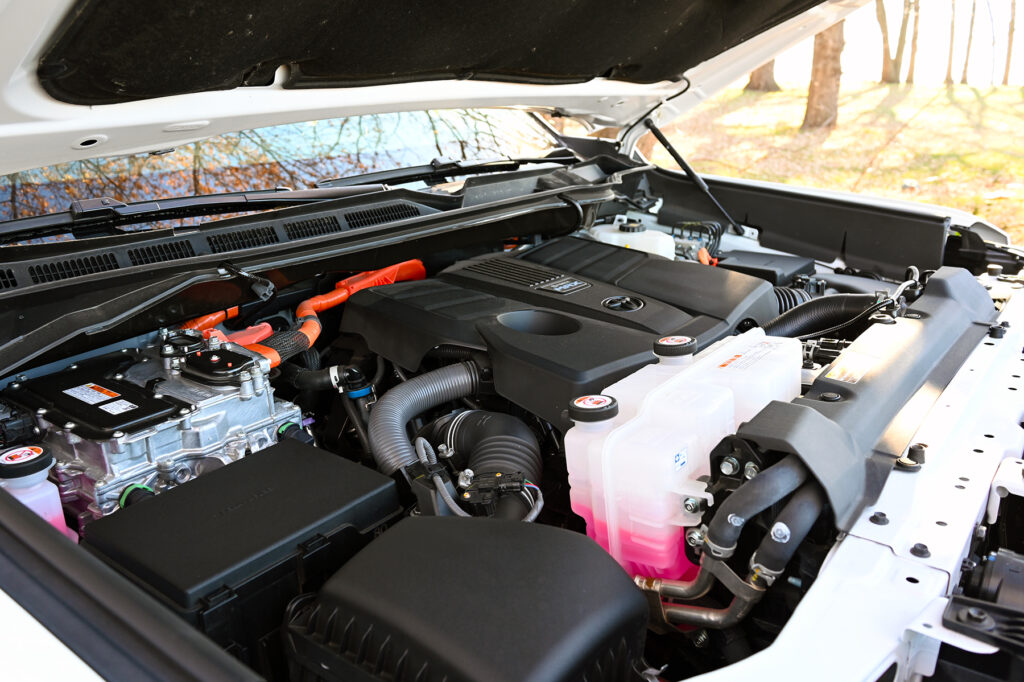
Around town, the power feels solid. The hybrid system cuts down on fuel consumption, and though my average was about 14.9 mpg over the week, the Tundra TRD Pro handled well on a mix of city streets and open road. When you hit the gas, it moves with authority, thanks in part to the electric motor boosting the output.
After spending a week using the Tundra TRD Pro like a truck I had to ask myself if I missed the old V8. The answer was no. No I did not. Not one iota. This powertrain is strong and it even sounds pretty good whether you’re running errands around town or tackling some off road trails.
Taking the Tundra Off-Road
Off-road, the TRD Pro shines. That suspension and lift come in handy when you encounter unexpected obstacles. The TRS Pro’s improved approach angle keeps you clear of most rocks and ruts. Toyota also fitted it with a front stabilizer bar, the afore-mentioned skid plate, and multi-terrain select to adapt to different types of terrain.
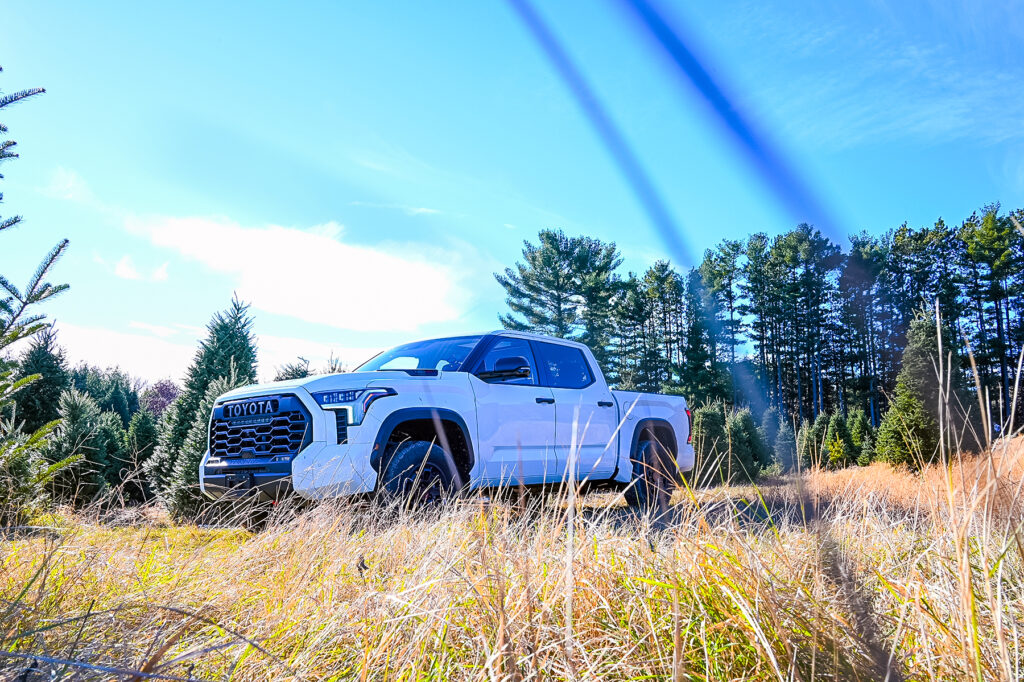
Then there are the cameras. Oh, the cameras. 360-degree cameras let you look all around the Tundra, but you can also look in the bed…while driving. I love that. Those cameras really come in handy when trying to place the large Tundra on off road trails.
While not quite in the league of the Ford Raptor or RAM TRX for hardcore off-roading, the Tundra TRD Pro can hold its own. Trails, mud, and rocks come and go with ease, and the Fox suspension handles rough roads with noticeable confidence. The TRD Pro is certainly a capable partner off the beaten path.
On-Road Ride Quality and Driving Experience
The on-road experience is typical Toyota—a bit conservative but comfortable. While driving around town and on the highway, the adaptive cruise control and lane-keeping assist kept things in check. The hybrid system in not intrusive at all. It’s seamless in power delivery and just works. The brakes are solid in feel and delivery and the steering is accurate enough for something this big.
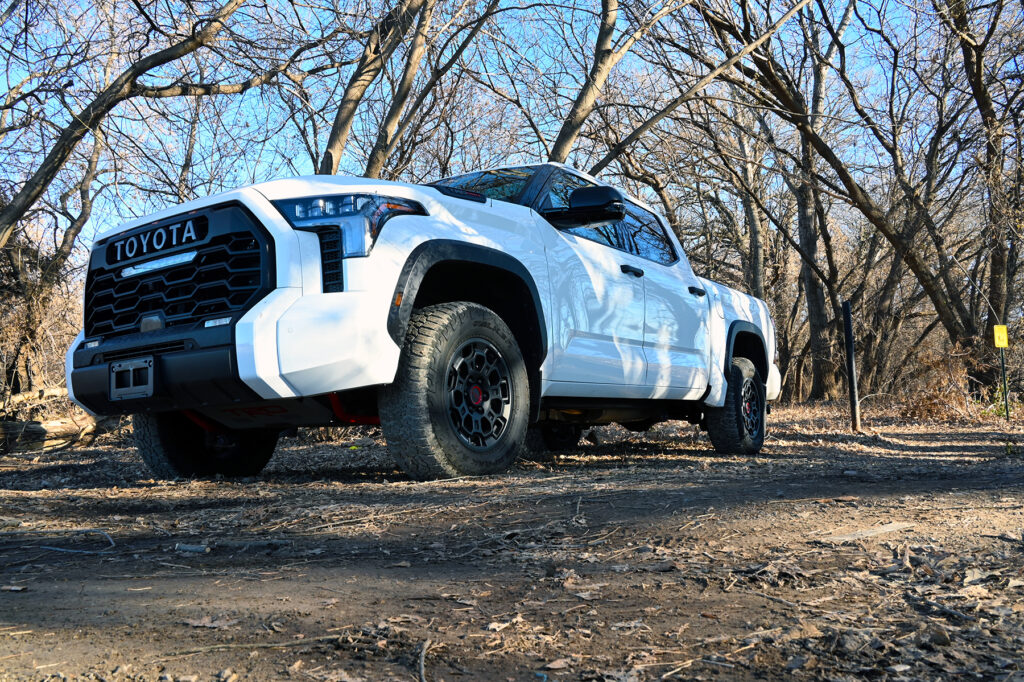
As far as fuel efficiency goes, it’s average. Toyota claims 18 mpg in the city and 20 mpg on the highway, but in real life, you may see it dip a bit lower, especially if you’re using the truck as intended.
And if you get a TRD Pro you better use it as intended. This is not a truck meant for trips to the mall or just dropping kids off at all their activities. It’s meant to tackle terrain and haul things. So do that!
I had hoped for some creative new features on the new Tundra, but It’s a little behind its competitors in that area. For example, when you flip down the tailgate in the back to get to that bed, there’s no step up. There’s no pop out handle. There’s no under bed storage. There’s nothing clever that is engineered into the bed of this truck like there are in, for example, the F-150 or Ram 1500.
The Verdict: Toyota’s Hybrid Workhorse
At the end of the day, the new Toyota Tundra TRD Pro is a tough, capable truck that adds hybrid tech to enhance power rather than reduce it. It’s more than ready for adventure, whether that means tackling a muddy trail or simply handling a long road trip in style. It’s not the perfect work truck and it’s not the perfect off road truck (it’s too big for that). But the Tundra is a really nice package.
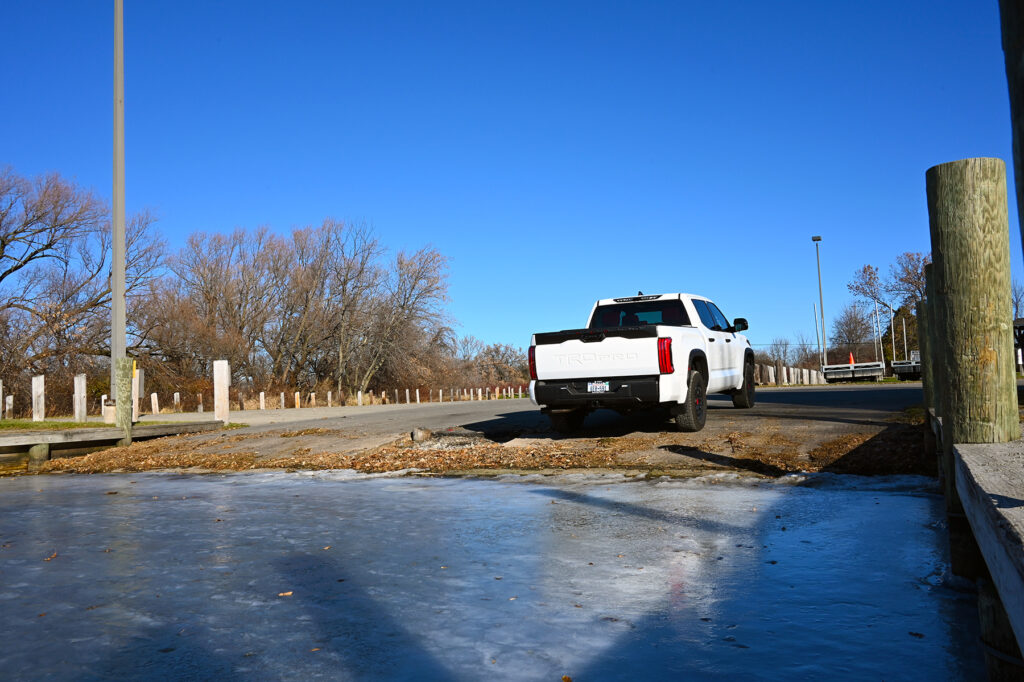
If you value Toyota’s dependability and want a truck that’s both comfortable and rough-road-ready, the TRD Pro is worth considering. It’s a good evolution of a trusted name, with just enough upgrades to make it fit for modern adventurers.
